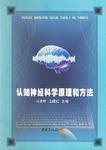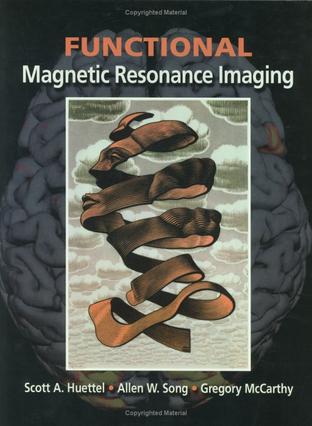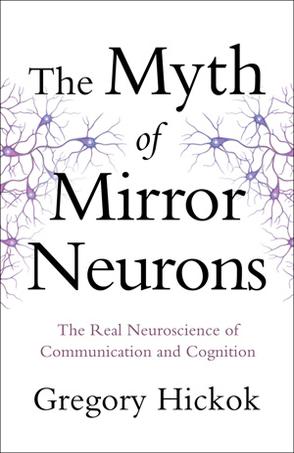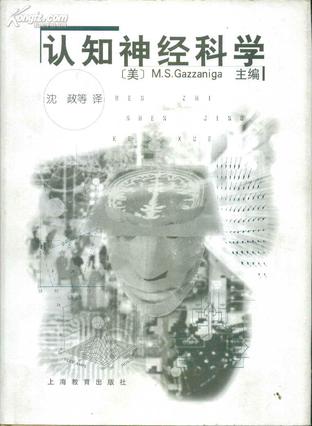-

认知神经科学原理和方法
-

Functional Magnetic Resonance Imaging
This textbook provides a true introduction to functional magnetic resonance imaging (fMRI), which has become the dominant research technique in cognitive neuroscience. Although there is extraordinary interest in fMRI among researchers, instructors, and students alike, its instruction has faced a set of challenges. Existing texts are targeted toward practicing scientists in the field, and assume a level of expertise not possessed by most students. Furthermore, most students do not have access to fMRI equipment and data, so they have no opportunity to gain hands-on experience. This textbook overcomes these limitations by presenting a comprehensive overview of all aspects of fMRI, designed with undergraduate students, graduate students, and beginning researchers in mind. The book progresses through 15 chapters. It begins with an introduction to fMRI and its history, principles, and technical requirements. The following several chapters cover the physics of fMRI, with careful attention devoted toward relating abstract concepts to research applications. Subsequent chapters cover the basic biological properties of the fMRI signal, including its spatial and temporal properties and its variability. Systematic discussions of research design and experimental analysis are included, and will be of particular interest to the many students with graduate or medical school aspirations. The book ends with discussions of future directions for fMRI, not only in terms of advances in understanding the brain and methodological improvements, but also in the integration of fMRI with other research techniques. Included with every copy of the book is a comprehensive CD-ROM containing study questions for each chapter of the book, suggested lab exercises, fMRI data sets including both functional and anatomical data, a tools section, and compete glossary. The authors' goal was to create a book that is sufficiently scientifically rigorous for researchers in the field, but also accessible enough to be easily read and understood by beginning students. All chapters are copiously illustrated, with key terms described in a marginal glossary, and have annotated lists of references. The book can be used as the primary text for classes in fMRI, or as a secondary text for cognitive neuroscience, research methods, or other courses. -

Vision
David Marr's posthumously published Vision (1982) influenced a generation of brain and cognitive scientists, inspiring many to enter the field. In Vision, Marr describes a general framework for understanding visual perception and touches on broader questions about how the brain and its functions can be studied and understood. Researchers from a range of brain and cognitive sciences have long valued Marr's creativity, intellectual power, and ability to integrate insights and data from neuroscience, psychology, and computation. This MIT Press edition makes Marr's influential work available to a new generation of students and scientists. In Marr's framework, the process of vision constructs a set of representations, starting from a description of the input image and culminating with a description of three-dimensional objects in the surrounding environment. A central theme, and one that has had far-reaching influence in both neuroscience and cognitive science, is the notion of different levels of analysis--in Marr's framework, the computational level, the algorithmic level, and the hardware implementation level. Now, thirty years later, the main problems that occupied Marr remain fundamental open problems in the study of perception. Vision provides inspiration for the continuing efforts to integrate knowledge from cognition and computation to understand vision and the brain. -

The Myth of Mirror Neurons
An essential reconsideration of one of the most far-reaching theories in modern neuroscience and psychology. In 1992, a group of neuroscientists from Parma, Italy, reported a new class of brain cells discovered in the motor cortex of the macaque monkey. These cells, later dubbed mirror neurons, responded equally well during the monkey’s own motor actions, such as grabbing an object, and while the monkey watched someone else perform similar motor actions. Researchers speculated that the neurons allowed the monkey to understand others by simulating their actions in its own brain. Mirror neurons soon jumped species and took human neuroscience and psychology by storm. In the late 1990s theorists showed how the cells provided an elegantly simple new way to explain the evolution of language, the development of human empathy, and the neural foundation of autism. In the years that followed, a stream of scientific studies implicated mirror neurons in everything from schizophrenia and drug abuse to sexual orientation and contagious yawning. In The Myth of Mirror Neurons, neuroscientist Gregory Hickok reexamines the mirror neuron story and finds that it is built on a tenuous foundation—a pair of codependent assumptions about mirror neuron activity and human understanding. Drawing on a broad range of observations from work on animal behavior, modern neuroimaging, neurological disorders, and more, Hickok argues that the foundational assumptions fall flat in light of the facts. He then explores alternative explanations of mirror neuron function while illuminating crucial questions about human cognition and brain function: Why do humans imitate so prodigiously? How different are the left and right hemispheres of the brain? Why do we have two visual systems? Do we need to be able to talk to understand speech? What’s going wrong in autism? Can humans read minds? The Myth of Mirror Neurons not only delivers an instructive tale about the course of scientific progress—from discovery to theory to revision—but also provides deep insights into the organization and function of the human brain and the nature of communication and cognition. -

千万别上魔术的当
《千万别上魔术的当》讲述的是关于魔术的神经科学。书中以魔术作为切入点,讲述认知神经科学的相关知识,从而揭示了魔术背后的秘密,进而从魔术背后的神经科学看穿日常生活中的小骗局。 《千万别上魔术的当》适合对魔术及神经科学感兴趣的各类读者阅读。 -

认知神经科学
本书译自MIT出版社1995年推出的同名巨著,它总结了当代科学关于感知觉、注意、记忆、语言、思维表象和意识等基本认知过程的最新研究成果,介绍了相关的新技术和实验范式,还讨论了认知理论的历史和现状以及存在问题,书中附有详尽的最新研究文献。本书对于神经科学、认知科学、计算机理论科学、心理科学和哲学等专业以及相关学科的教师、研究生和研究人员是一本科学价值很高的读物,读后可扩展视野、开阔思路,提高理论水平。